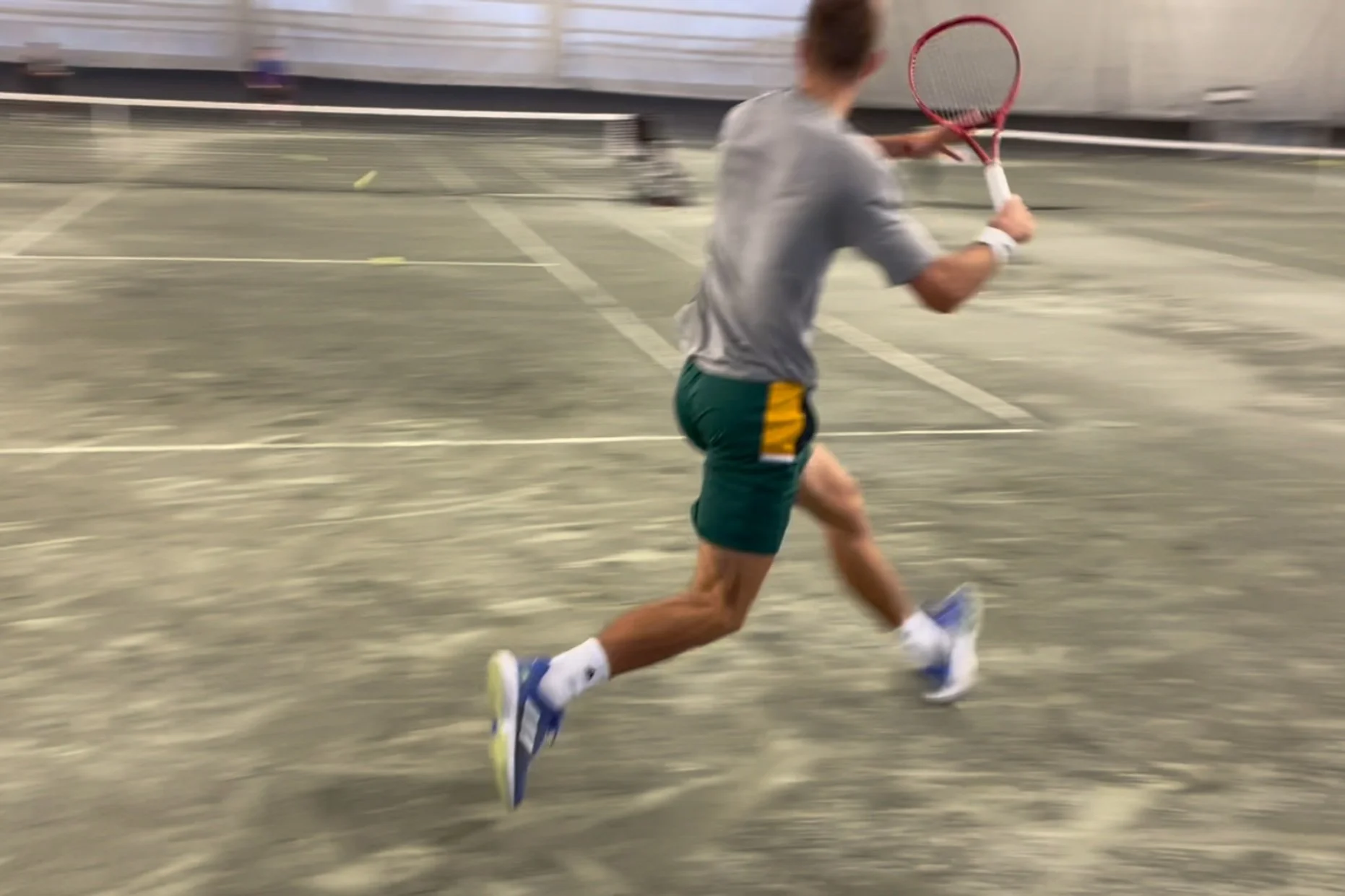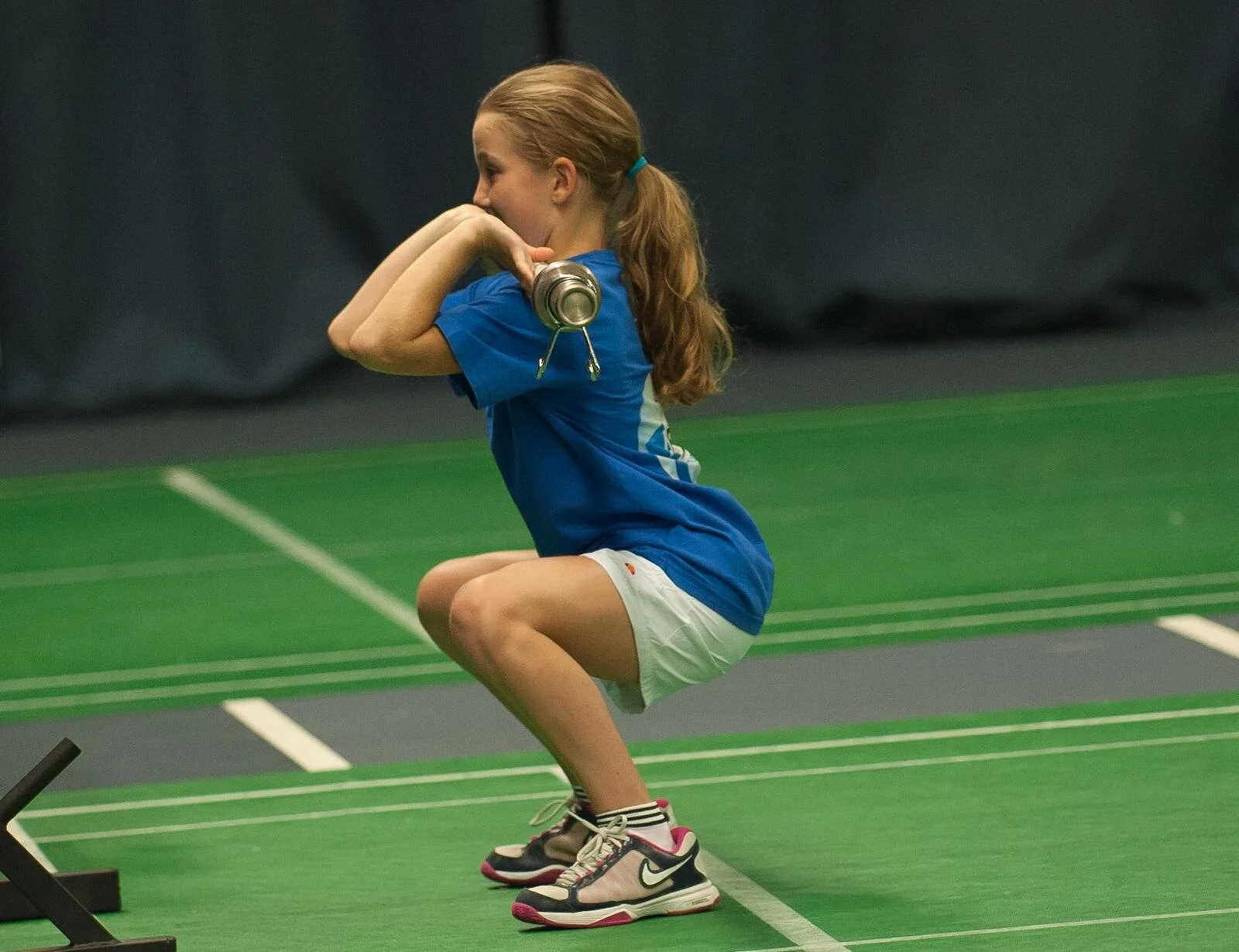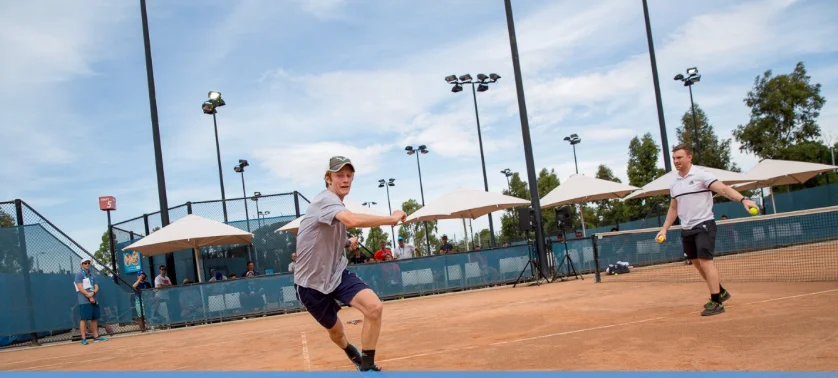I don’t train as many junior players now as I have in the past. It’s not that I don’t want to, it’s just that I’m in a position right now where older players - those that are playing professionally (either on a full-time or part-time basis) - take up a big chunk of my time.
That said, I still manage to coach a number of younger players (both in-person and remote). The ages range but generally fall between 9 and 15… and all of them are exposed to strength training in one form or another.
The reason I’m bringing this up is because I often get asked by parents… “is lifting weights dangerous?” or “will lifting weights stunt my child’s growth?”...
Are you a high-performance player or coach? If so, this post is for you.
You see, I’ve coached in a number of high-performance settings. From academies, to federations and in private settings. One common characteristic that has struck me time and again is training schedules. The typical schedule sees players training Monday to Friday. On rare occasions, some take part in Saturday morning sessions - but this is certainly not the norm. As you can see, these settings follow the regular school and work week schedule.
But is it the most ideal option when developing an elite performer?
For those of you who weren’t aware, my wife and I spent the last 2 years in Munich, Germany. It was a refreshing experience - especially considering that Munich is regarded as one of the nicest cities in Europe. But besides that, I’m eager to share some details about the tennis system in Germany, especially considering I was able to experience it firsthand
My aim is to give you an inside look at what competitive tennis in Germany is all about (based on my perspective) - from the club structure, to the elaborate ranking system and more. Overall, my experiences were quite positive - and I feel that the tennis world in North America can learn a few things from the German system.
Imagine this scenario. An amateur player takes a lesson from a coach with the hopes of hitting a forehand like Roger Federer.
Let’s say the coach plays along. He/she presents a sequence of images to the amateur in order to see exactly the various phases of Roger’s forehand. Next, the amateur performs shadow swings, going through each position as carefully as possible. The coach then feeds the amateur a few balls, providing feedback ONLY on how close the stroke looks to Roger’s.
Coordination training is an often misunderstood and at times haphazardly delivered element of physical preparation. As with everything in coaching, context is king. A simple search of coordination training can lead you to a whole host of elaborate and dynamic drills. A well-meaning coach sees these drills and looks to implement them in their next practice – again I’m not suggesting that this is malpractice, but, more often than not, the context for including that exercise is missing.
I’ve been asked countless times - from tennis coaches to players and even parents - 'how can I get more leg drive on my forehand?' 'Or more jump from the legs on my serve?' 'Or more explosiveness when moving laterally?' There’s no simple answer. It truly depends on a number of factors, including your strength levels, coordination, training age, biological age, training history, genetics and more. But if I absolutely had to boil my answer down to one form of training, I’d have to look towards plyometrics.
There are many terms to describe plyometrics including plyometric training, plyos, jump training, shock training (that’s what Soviets used to call it) & ballistic training. I may use some of these terms interchangeably throughout this article but they all refer to plyometrics. Whatever you call it, it’s general premise is to increase power output.
As coaches, what do we do when young juniors misbehave? Or what about when they don't complete an intended drill? I’ve been around the game for a long time now. From academy settings, junior circuits, the pro tour and everything in between. And what kills me more than anything is players getting punished, either for poor behaviour or not achieving a specific task. Coaches yell, make players run, do push-ups, or suffer some other form of physical punishment. Is this really the best approach?
When teaching various tactical scenarios to players, I often ask them the following question: “what do you think is the most common rally length in tennis”? Less experienced players jump to answers like 7 or 9 while those that have been playing for many years reply with 3, 4 or 5. Do YOU know what it is? When it comes to professional tennis, according to Brain Game Tennis, it’s 1. Can you believe that? The most common rally length (called the mode, in statistics) is 1! That’s a service ace or a service winner (i.e. the returner makes an error off the serve). This happens about 30% of the time. The next most common rally length is 3 - that’s a serve, return and one more shot.
Medicine ball training is a widely popular training modality amongst tennis players at all ages and levels. More specifically, med ball (MB) training is primarily used to augment rotational power. For a review of the underpinning science and theory on this topic, please take a look at a previous post on this topic. Why augment rotational power though? Today's game is classified as power based - players are hitting the felt off the ball. The rationale from a training perspective is as follows: increase rotational power and you'll increase hitting speeds - whether that's groundstroke or serve speeds.
Last week I presented in front of the BTV (Bavarian Tennis Verband) - it’s one of the biggest associations in Germany and many of the top junior tennis coaches were in attendance. The topic - how we can use off-court training strategies to accelerate on-court development. I had 3 young junior players helping me during the practical component - going through a series of jumps, bounds, throws, bodyweight exercises and so on. They were 12-13 years old and apparently, some of the best young talents in the country (I never met them previously and had never seen them play or train).
While there was a lot of positive feedback from last week’s post on blocked vs. random practice, there was also a bit of confusion. I suppose the term ‘random’ can be a bit misleading. To clear the air, this week’s post will attempt to clarify the supposed dichotomy between blocked and random practice and offer a slightly different perspective to the argument. Furthermore, there are 2 other forms of practice - called ‘variable practice’ and ‘constant practice’, which can be influenced by both block and random approaches. Lastly, several examples of each practice type will be offered and described, along with the 'why' behind their use.
Many experts in the field of motor learning believe that the way a coach interacts with an athlete, bears a tremendous impact on the improvements that athlete makes. These same experts, however, would argue that the organization of a practice is perhaps even more important than what a coach says to his/her athlete. Let’s assume that to be true for a moment. As a coach, would that change the way you look at your practices? As a player, would it affect your perspective when attempting to improve serve accuracy, for example?
Are you familiar with the ‘10,000 hour rule’? Many of you probably are. If you’re read Malcolm Gladwell’s book, ‘Outliers’, then you definitely are. The premise goes like this; practice something a lot - 10,000 hours, or about 10 years - and you’ll develop expertise in that particular domain. It sounds simple doesn’t it. But is it truly so? Many of us, or our students, have played tennis for well over 10 years, but I wouldn’t necessarily start calling ourselves ‘experts’. Now we might be pretty good, but expertise, as defined by researchers in this field, means far more than just ‘pretty good’ or even ‘really good’.
What if I could tell you the secret to successfully winning more points and being more in control of a match? Would you want to know? Of course you would! It’s not a secret but sometimes, we look past it, forget about it or take it for granted. You must know the road ahead, because if you know what’s coming next you have an incredible power called Anticipation. Anticipation is the ultimate advantage! The first step in increasing the power of anticipation is to realize and affirm the number one body part that you'll use to play tennis – your eyes. The skill of shifting the eyes from what you just did - striking the ball - to noticing the body position and the racquet position of your opponent, is a critical one. The main reason we lose points and get beat is we fail to anticipate what’s coming next.
When I was a teenager, I left home to train at a tennis academy - about 2 hours away from my family. I grew up in a small city where there was 1 outdoor tennis club and no indoor tennis - which is why I made the move. Growing up and playing at a small club, with no junior program, you tend to get friendly with older adult members. Most of my practice partners were over 35 with many above the age of 50. When I told them I was leaving, they said one thing that stuck with me until this very day - “hopefully they build on the game you have, rather than changing all of your strokes at once”.
I’m constantly trying to bridge the gap between how players should train off the tennis court and how they should train on the tennis court. It’s important to look at on-court tennis training through a physical lens as much as a technical or tactical one as these qualities are all interrelated. Let's look at an example to illustrate this point. Say you're working on retrieving tough wide balls on the backhand side. Not only is technique targeted (attempting to refine open stance backhands, for example), tactics (being able to send the ball back high/deep and with plenty of spin for example) along with the specific movement qualities (explosiveness, acceleration, deceleration) are also being trained. As you can see, it’s very difficult to separate one quality from another as they are all in some way related.
The differences between junior players and pro players are more than meets the eye. Sure the pros have more experience, they’re fitter, have greater mental toughness and so on...but one area that the pros really excel at, especially compared to the juniors, is their warm-up. Now you may be thinking to yourself, “they are pros, it’s their job to have a thorough warm-up”. But the warm-up is much more than just a warm-up...it could make the difference between winning and losing, incurring an injury or performing at your very best.
Not enough is written about female athletes. They’ve got charisma, class and most of all, they’re damn good at sport. In tennis, the women’s game is constantly improving. Not only are women hitting the cover off the ball, but more and more feel & touch are becoming a part of their arsenal. Many believe the women’s game is still one-dimensional - but in the past several years, different types of game styles have emerged. Look at Radwanska, Halep and even Kerber - they’ve got variety. Not to mention the level of women's tennis has strenghtened - you just never know who’s gonna make it deep into a slam anymore. Sure Serena’s had some streaks where she’s dominated the women’s game but recently, the draws are more open.
Over the years I’ve coached many female tennis players...and I’ve learned a lot. From the tennis court to the weight room and everything in between. I’ll share my experiences in this article…and hopefully shed some light on female players.
Last week I wrote about some key lessons I learned from a weightlifting coach. One of those key lessons was the importance of general training for athletes. Although general training is vital for any athlete, developing athletes may get the greatest benefit from this type of work. When I talk about general training, I am referring to non sport specific movements. For tennis players, this means movements that are non tennis related. John Kiely, sport scientist and elite coach, refers to general training, especially in the early years of development, as movement diversity. In this article, we’ll explore the current dogma in physical preparation for tennis, why early specialization is an almost must and the theory behind general training.




















